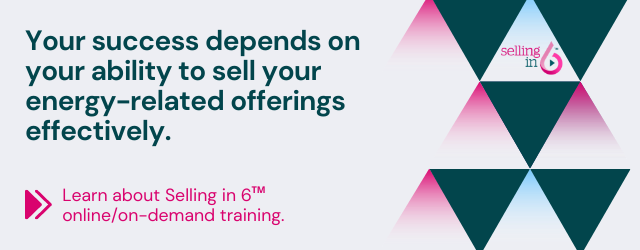If you don’t have much experience selling to the C-Suite (CEO, CFO, COO, etc.), it can seem like a daunting task. In reality, it’s only daunting if you’re not prepared – both in terms of what you plan to say and what you expect your audience to care about.

We carefully address C-Suite selling at the Selling Energy Boot Camp because far too many salespeople still get nervous in the boardroom environment. Today, I’d like to share something I read in a paper that was published by the International Energy Agency and the Institute for Industrial Productivity called, “The Boardroom Perspective: How Does Energy Efficiency Policy Influence Decision Making in Industry.”
While this paper focused primarily on the influence of energy efficiency policy on C-Suite decision-making, it provided some great insight into the types of questions C-level execs are inclined to ask, and the core values that each one is responsible for upholding. With this knowledge, you as a sales professional are better equipped to approach the boardroom with confidence… and to close the sale! This paper was set in an international context, so one needs to adjust its findings a bit to reflect C-level decision-making in the US market.
The financial measures mentioned throughout the paper suggest that “Challenger Selling” is in order – if for no other reason than migrating the discussion from SPP/ROI/IRR to more proper financial metrics when evaluating projects for funding approval.
Moreover, as you walk into any C-level office, ask yourself what that particular officer does for a living and what yardstick is used to measure his or her own success at the company. For example, the board hires a CEO to manage an enterprise and to grow its valuation. It should be no surprise that you need to answer the following two questions during your concise presentation: How will what you are proposing make his/her enterprise easier to manage? How will what you are proposing make his or her enterprise more valuable? If you are unwilling to think through the answers to those two questions – connecting the dots between what your offering provides and what this prospect actually seeks – then you risk wasting both your time and your prospect’s.







